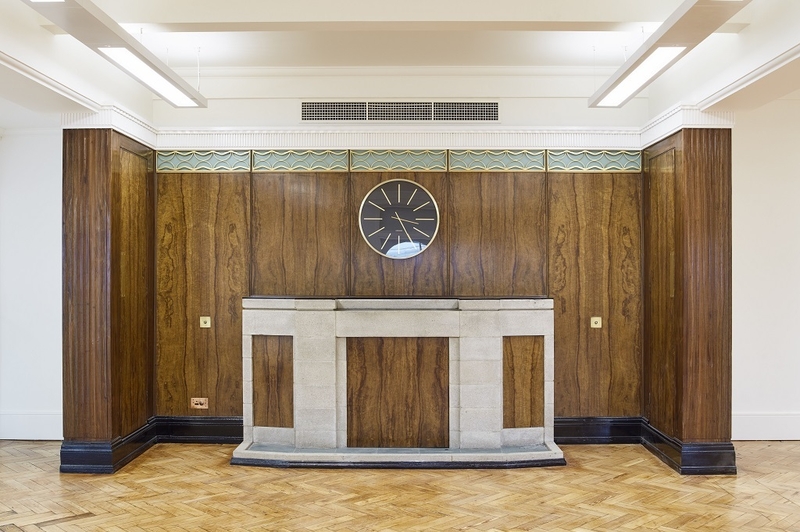Jonathan Schofield is impressed by a cleaned and polished city gem
It’s about jobs this renovation game. That’s what the city needs, that’s what the region needs.
Yet, of course, jobs need places to inhabit.
The Hanover building, in the NOMA redevelopment area, will be a fine host for hundreds of new jobs coming to the city. The £34m renovation comes courtesy of Hermes Investment Management, Sheppard Robson architects and Russells Construction. The building will soon enjoy the company of 600 plus Amazon staff, which rumour has it might substantially increase in the not too distant future. The jobs are said to be ‘highly skilled’ so should deliver good wages.
It is pure powerhouse Edwardian, an almost bombastic expression of company and national confidence
The original building was designed by the Coop’s in-house architect F.E.L. Harris. It opened in 1906 as the headquarters of the Cooperative Wholesale Society (CWS) and was called New Central Building. It was designed to look like a headquarters building and still does.
Take a look at that façade. It is pure powerhouse Edwardian, an almost bombastic expression of commercial and national confidence. This was a time when, like it or not, the British Empire was at its peak and the nation felt big.
Hanover is Baroque, a Classical-style formed of big bold elements, nothing is reticent, subtlety is shunned. The base of the exterior walls are of Aberdeen granite, elsewhere there's red brick with Derbyshire sandstone dressings. The most immediately eye-catching elements are the giant order columns at second floor level, then a fiercely heavy cornice, followed by a sweet but strong arcade high in the sky.
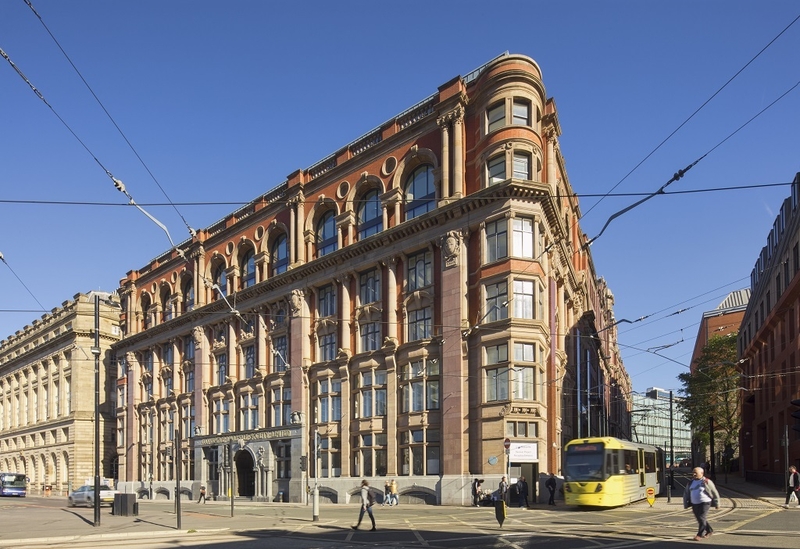
The details are caught next. There are chubby kids, called putti, sat in relief panels, each different from the next, each coddling a dolphin. This underlines how the CWS traded over the oceans. Above, in the same panel, are garlands laden with tasty fruits of the world which the CWS was bringing to British shores.
Under that heavy cornice there are cartouches (decorative frames for an inscription). These almost add an element of farce. They carry the names of areas of the world where the CWS had business, and mix Sydney and New York with tiny Tralee in Ireland.
There is one element missing from the façade. I looked up an original sketch from the 1906 Manchester Guardian which showed Harris had placed odd little domed turrets on each corner. These have gone, perhaps blown off in World War II. The building looks better for their loss, tighter, stronger.
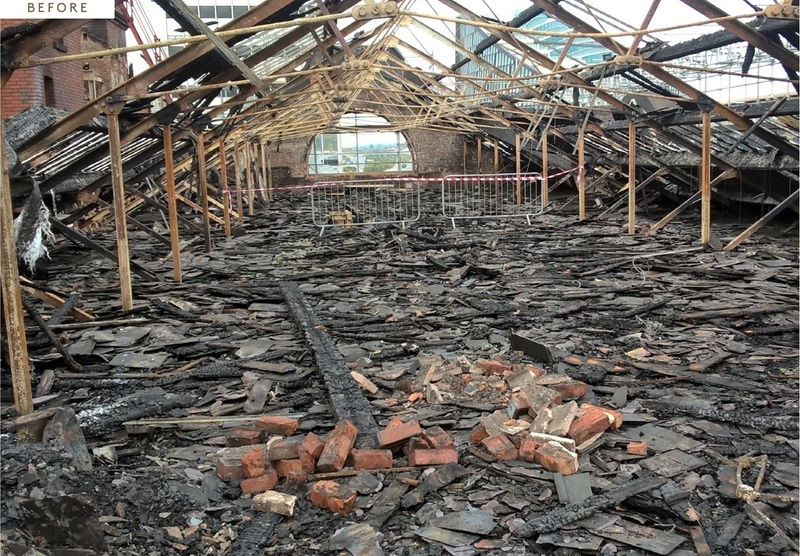
Sheppard Robson has kept the epic feel going on the inside, by restoring the grand Corporation Street entrance which needed considerable reworking. There are actually two buildings here with a later 1909 structure attached to the rear of the original - also Harris. The void between the two has been turned into a splendid atrium with glazed brick on one side and a network of bridges above. It defines crisp.
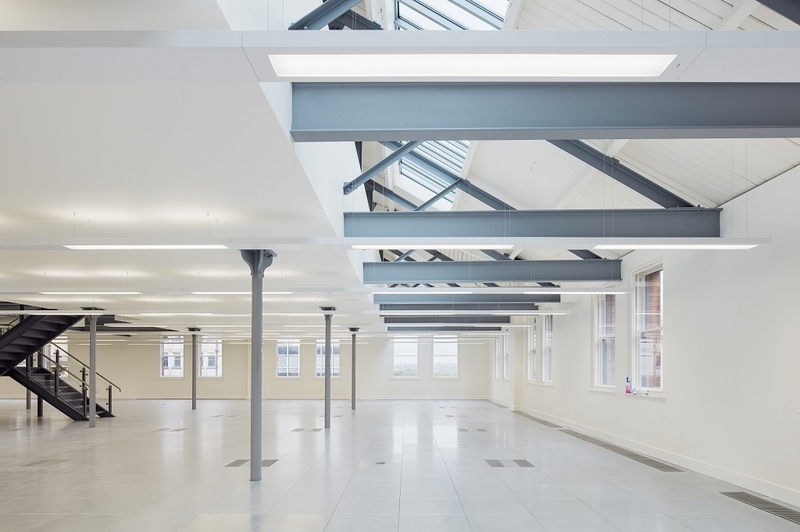
Mostly though, the task of Sheppard Robson was to clear the clutter of a zillion malformed semi-refurbishments during the Coop days. They also had to deal with a fire in the complex in 2015. The result is very large floorplates with some original details including lovely tilework on the stairwells, a fine art deco fireplace and clock plus some good metalwork.
The tilework includes the CWS motto 'Labor and Wait' with labour spelt in the American fashion. This was quite intentional. The CWS very much thought of itself as progressive in the Manchester liberal tradition, thus they were supporters of the Union in the American Civil War. It followed then that the CWS were anti-slavery, and reflected this by taking their motto from the US poet Henry Wadsworth Longfellow's poem, 'A Psalm for Life'. The last verse of the latter reads: 'Let us, then, be up and doing/ With a heart for any fate/Still achieving, still pursuing/ Learn to labor and to wait.'
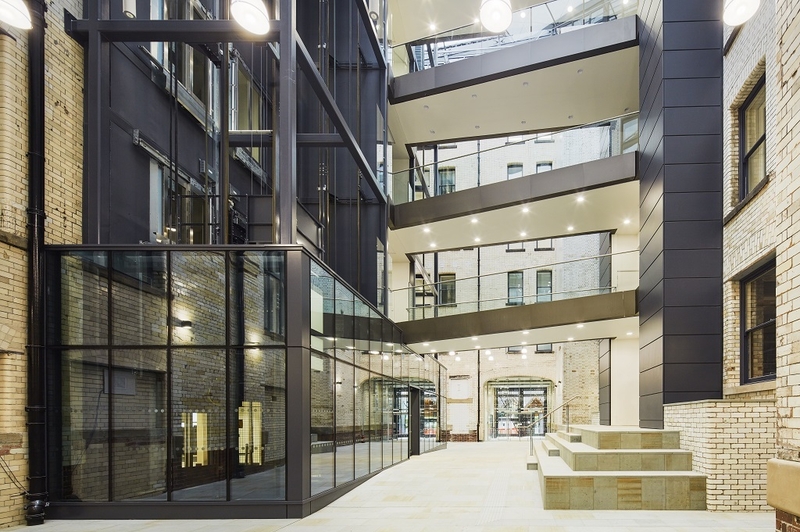
In all a total of 90,000 sq. ft. of Grade A office space and 30,000 sq. ft. of ground floor retail and leisure space including basements, has been brought back into active use. The 1906 Manchester Guardian report called the erection of Hanover ‘a great public improvement’ and a ‘most effective building’.
For years it was rundown or abandoned and shabby, now it has regained those 1906 qualities. It improves Corporation Street and should be more than effective for Amazon.
